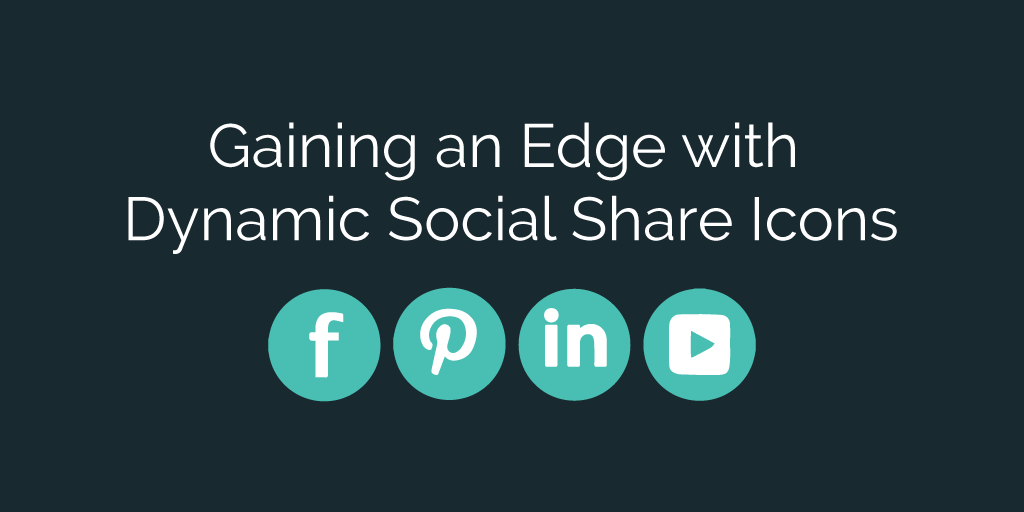
Digital publishers are often at the front of the curve when it comes to adopting the latest in social media. The way people consume media today, they have to be to survive. The vast majority rely on social for a ton of their traffic. Thirty-four percent (and growing) of publisher traffic came from the top five social networks as of January 2015, according to Shareaholic. The social networks, in turn, have so far been generous to the publishers as well, with organic reach far greater than brands. Between November 2013 and February 2014, Buzzfeed and Business Insider saw a 20 percent and 16 percent gain, respectively, in referral traffic from Facebook, while brands and “viral” sites’ referral traffic plummeted.
I’ve also noticed that the top publishers understand the importance of earned social — when readers share articles on their own — and have adopted social icon strategies to maximize sharing from their readership.
Take these two FastCompany articles, for example:


You’ll notice, circled in red, that FastCompany limits their social icons to just two icons — the two networks which their readers have shared the particular article most. The first article has Twitter and Facebook, and the second article has LinkedIn and Twitter.

When you click on the article, the page shows the same two icons. But when you mouse over the dots, it reveals all of the social icons. And when you mouse over each icon, they give you the actual share numbers for each social network. This article has been shared 224 times on LinkedIn, 132 times on Twitter, 95 times on Facebook, 20 times on Google+, and two times on Pinterest.
Oddly, at the bottom of the article, FastCompany displays large Facebook and Twitter buttons, no matter what. It seems like a strange inconsistency. Not sure what’s going on there.
Now take Buzzfeed.
Like FastCompany, Buzzfeed changes their share buttons based on reader behavior. Unlike FastCompany, they also take into account how readers landed on the article.

It’s a pretty subtle difference, but when I came to the article from Twitter, they put the Twitter icon first. When I came from Facebook, they put the Facebook icon first. It makes sense — if I found an article from a social network, chances are better that I’m active and ready to share on that same network than a different one. (When there’s no referrer (direct traffic), the FB icon is the default first social icon, if you were curious.)


Also interestingly, Buzzfeed offers different ways to connect based on the article category. The Buzzfeed “Buzz” category offers buttons to connect on Facebook, Pinterest, and Twitter, while the Buzzfeed “News” category offers buttons to connect on Facebook and Twitter. I’m willing to bet that Buzzfeed saw that nobody was sharing news articles on Pinterest. If nobody is using it, take it out! It’s better to just remove it than let it distract readers.
These concepts can and most certainly should be applied to brand content and products. Too often, social sharing is an afterthought to the ecommerce experience. Icons are slapped on without much thought, and as a result, don’t get used very often. It’s a huge missed opportunity.
At the very least, identify which social channels your customers are actually using. If Pinterest is a huge traffic and conversion driver, put a big “Pin It” Pinterest button right on your product images. If Google+ is a ghost town for your brand and audience, don’t waste valuable real estate with that icon. Remove it and make the rest of the buttons larger.
As the FastCompany and Buzzfeed examples show, there’s a ton of opportunities to tweak how you present social sharing buttons to optimize your earned social sharing. Analyze your conversion data and your traffic data, make some hypotheses, and test! It’s the only way to find out what works best for your specific brand and gain an edge on your competition.
This article was syndicated from Business 2 Community: Gaining An Edge With Dynamic Social Share Icons
More Digital & Social articles from Business 2 Community:
- 6 Game-Changing Resources for Optimizing Your Entire Social Strategy
- The Good, The Bad, And The Less Ugly New LinkedIn Homepage
- How to Evaluate Your Ecommerce Needs: A Breakdown of Benefits for Licensed and SaaS Solutions
- Freelancer Tips: How To Use Social Media To Attract New Clients
- What the Pending Demise of Google+ Means for PR and Marketing




